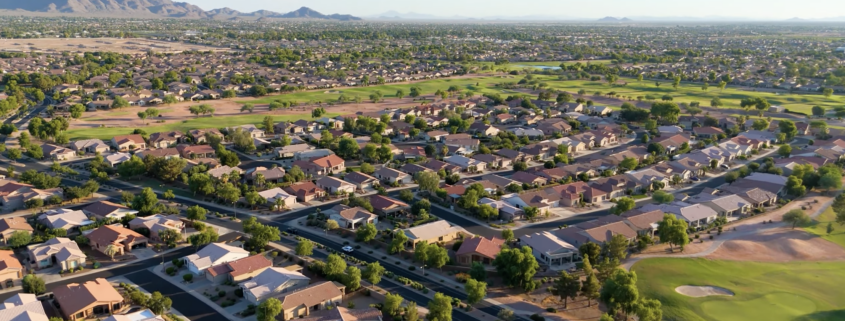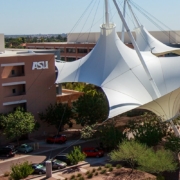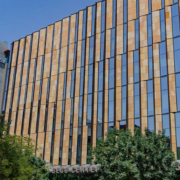Affordable Housing Crisis In Arizona: Here’s What New Report Shows | Living In Phoenix Arizona
AFFORDABLE HOUSING CRISIS IN ARIZONA: HERE’S WHAT NEW REPORT SHOWS
LIVING IN PHOENIX, ARIZONA
Metro Affordable Housing Crisis In Arizona: Here’s What Analysis Shows
A new report from Arizona State University shows that the state is in a housing crisis, with rents skyrocketing 72% from 2010 to 2022 and home-buying being out of reach for much of the population. In addition, critical concerns about the future of the water supply and the energy grid are complicating housing development and economic growth.
But a gathering of top experts in the state revealed that the picture is not entirely gloomy. The Housing and Water Policy Summit, held Friday by the Morrison Institute for Public Policy at ASU, showed how municipal and state governments are working to create more affordable housing and how other stakeholders are addressing the balance between economic growth and strategic resource management.
“Groundwater across the state is a hugely valuable supply,” said Kathryn Sorensen, research director of the Kyl Center for Water Policy at ASU who moderated a panel discussion titled “Envisioning Smart Growth” at the summit.
“There isn’t enough water for everything, right? Human wants are always unlimited. Our ability to meet those wants is always somewhat limited. I hope you think of these trade-offs in terms of which developments are worth the water.”
The “State of Housing in Arizona Report,” released at the summit, outlined several factors driving the state’s housing crunch. The report is the first created by the Arizona Research Center for Housing Equity and Sustainability, funded by the U.S. Department of Housing and Urban Development and housed in the Morrison Institute.
“Access to housing that is affordable, or housing that costs 30% or less of a household income, is essential for individuals and communities to thrive and is recognized as a fundamental human right,” said Allison Cook-Davis, director of research at the Morrison Institute and co-director of the Arizona Research Center for Housing Equity and Sustainability.
“However, Arizona is confronting a housing crisis as supply and affordability have markedly declined over the past decade. Arizona residents are increasingly experiencing housing insecurity and the housing crisis has become a central issue for our state and local governments.”
Among the top takeaways of the report:
- Arizonans’ incomes are not keeping up with rent prices. Minimum wage workers would need to work 86 hours per week to reach the annual income needed, $62,252, to afford a two-bedroom home. In 2022, nearly half of all renters were cost-burdened — paying more than 30% of their income toward housing — the highest percentage of cost-burden since 2010.
- There’s not enough affordable and available housing for extremely low-income households. This gap increases the risk of evictions and homelessness. Moreover, 26% of publicly subsidized low-income housing units are set to expire in the next 30 years.
- The median sale price of a home increased by 57% from 2019 to 2023, to $423,400. At the same time, high home values and lower interest rates during the pandemic allowed existing homeowners to refinance and lower their housing costs, which reduced the supply of houses for sale. That lack of supply, along with higher interest rates, put home-buying out of reach for many first-time homebuyers.
- Affordability ratios (price to income ratio) are higher for Hispanic or Latino, Black or African American, and American Indian and Alaska Native populations than for white and Asian households.
- Arizona’s population growth has outpaced the growth of all types of housing. Since 2010, the population has grown by 22% but housing units have increased by only about 12%.
- Some cities, including Tempe, Phoenix and Tucson — as well as the state Legislature — have changed policies to create more affordable housing, such as approving accessory dwelling units, easing rezoning and preventing income discrimination. Federal funding will also create more units.
The summit also addressed topics that are intertwined with housing in the state’s future.
Water Challenges
Sarah Porter, director of the Kyl Center for Water Policy, housed in the Morrison Institute, gave a talk titled “Water is Not the Problem – Yet.”
“So to our question, are we running out of water for housing in Arizona? The answer to this question is kind of complicated,” Porter told the crowd.
“We’re not running out of water for housing, but we are challenged to find the water for some types of housing.”
Groundwater is a non-renewable supply. To acquire approval for new building, developers must prove that they have a 100-year supply of water, which is possible in communities served by municipal suppliers, such as the cities of Phoenix, Tempe, Glendale, Chandler, etc.
But further housing development may be affected in areas outside of municipal suppliers, such as the fast-growing communities of Buckeye and Queen Creek, she said.
“It’s a water problem for the region because it means growth that had been expected and planned is now challenged to figure out a different water solution,” she said.
Increased housing density will ease pressure on the water supply, Porter said.
“Imagine duplexes or triplexes or other types of multifamily housing, which means more water per acre is being used indoors. And so more of that water can be kept in the system — reclaimed, treated and used over and over again,” she said.
“That’s the future for water management of many of the more built-out cities in central Arizona.” – more at azbigmedia.com
Thinking about investing in Phoenix real estate? Have a property to sell in Arizona? Tell us what you’re searching for. Connect with us to buy, sell, or lease multifamily, residential and commercial real estate in Phoenix, and across Arizona. Let’s work together.
Natan Jacobs, Vestis Group
Call: 602-281-6202
Email: Info@Vestis-Group.com












